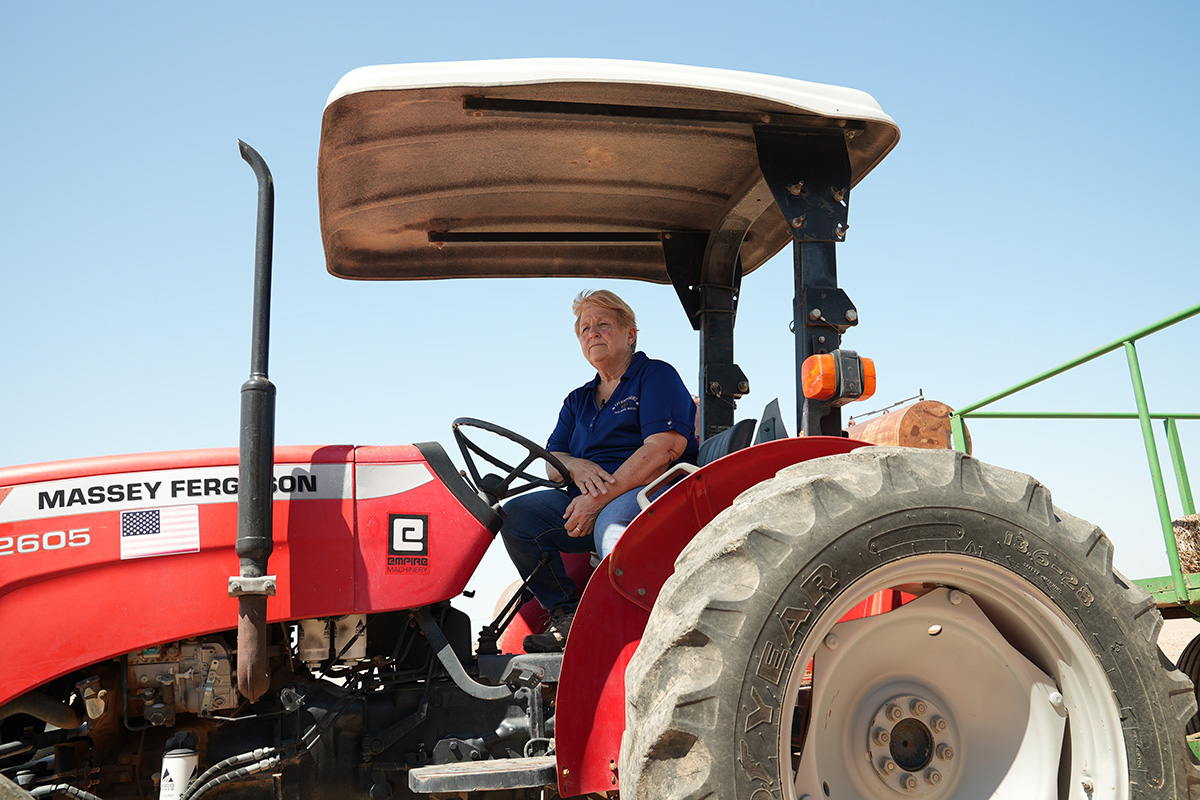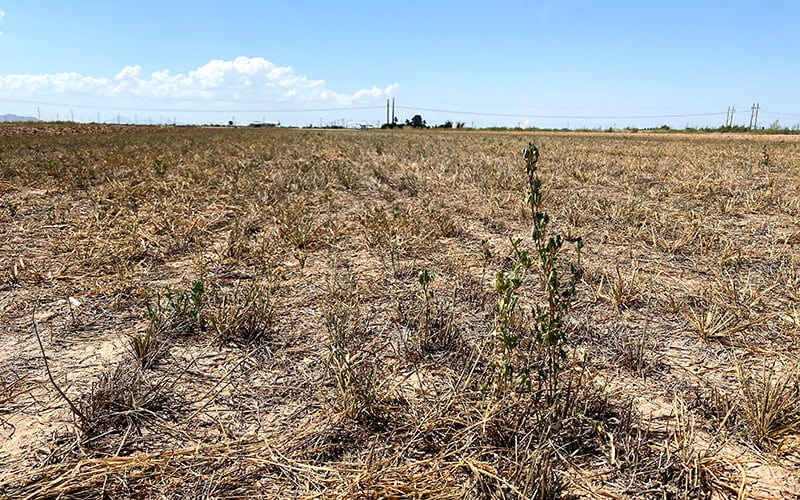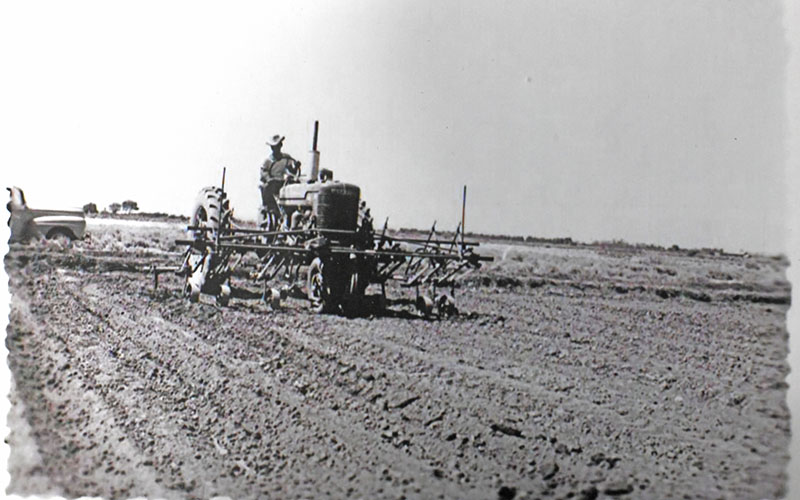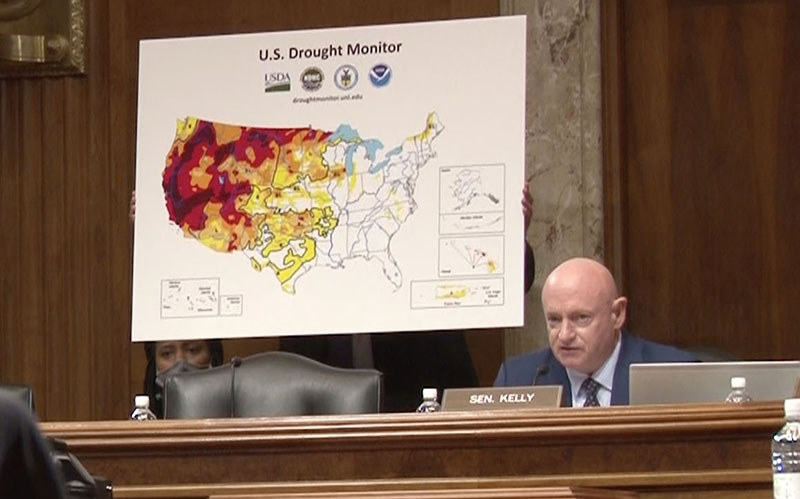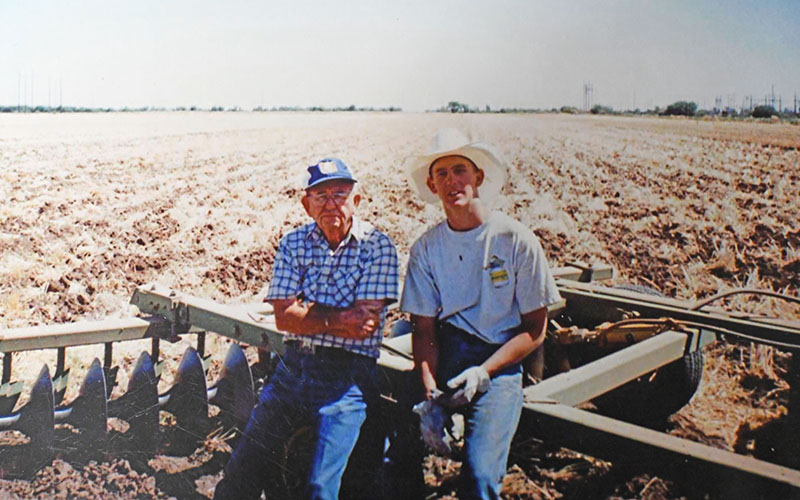To aid farmers, the San Carlos Irrigation District offered a solution: farmers could purchase 1 acre-foot of Central Arizona Project water. But it came with a catch: qualifying farms had to be north of the Pima Lateral Canal, but Caywood Farms is just south of it.
Caywood’s neighbors, the Wuertz Farm, also rely on San Carlos water, but bright green cotton pods fill their fields. That’s because the Wuertz Farm has a groundwater well, the kind Caywood’s grandfather didn’t want to dig years ago.
“I’m thinking, ‘If only if only he had the foresight to do that,’ you know?” Caywood said. “You look at this (her own field) and this was supposed to be profit for us, and we can’t do anything to help it along. We have no water available.”
Caywood doesn’t have many good options to choose from. She could completely level her fields and start over, but she said that costs thousands of dollars and there’s no guarantee that next year would be better. She could leave the fields as they are, but she’s still looking at a large water bill – one she can’t pay without crop yields.
“We still have to pay (for that) water in taxes. That’s $22,000 a year,” Caywood said. “We’re paying for a product we’re not receiving, and it’s very aggravating and very painful.”
The loss affects more than Caywood’s farm. McGuire said Pinal County’s economy relies on alfalfa, which with other crops generates nearly 30% of the county’s sales.
“It’s a linchpin for the rest of the industry in Arizona,” McGuire said. “They actually rank in the top 2% of the total value of agricultural sales, so they’re in the top 2% of how much is being sold off of the farm in the entire nation.”
Another option for farmers is to pump groundwater, McGuire said, but that’s expensive, and the switch isn’t as simple as not putting seeds in the soil.
“Planting decisions happen 10, 12 months before you actually harvest a crop,” McGuire said. “Those kinds of decisions can’t happen on a spur of the moment basis. And so I think the overarching feeling in the county is, we know we have to do something different, we just don’t know what that is.”
Caywood’s son, Travis Hartman, has provided some support. He recently bought land near Coolidge and Eloy that does receive Central Arizona Project water and he planted corn there. He also works as a firefighter and a paramedic, to bring in additional income.
